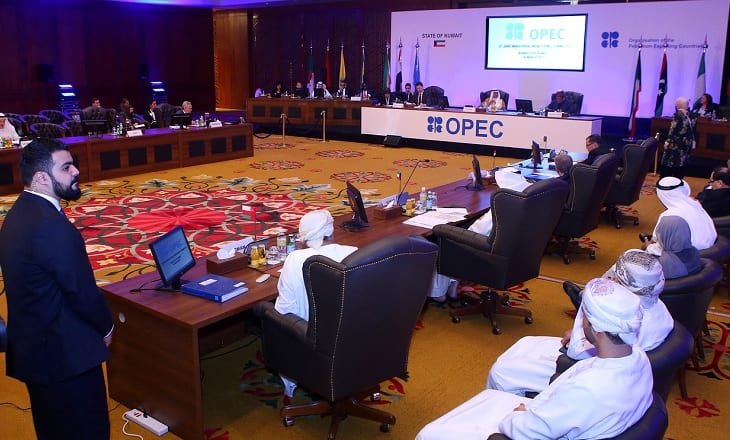The following article was written by Ipek Ozkardeskaya, Senior Market Analyst at FCA regulated broker London Capital Group Holdings plc (LON:LCG).

Ipek Ozkardeskaya, LCG
Oil prices advanced to the highest levels since mid-2015. The supply tightening from OPEC (Organization of the Petroleum Exporting Countries) and a few non-OPEC producers and an improved demand outlook pushed the price of Brent crude more than 40% higher since June 2017, The WTI crude gained 33% over the same period.
The EIA (Energy International Agency) revised its 2017 forecast higher in September, citing that the shift in fundamentals are enabling demand to meet supply. The rebalancing in the oil industry is underway, according to Neil Atkinson, head of the EIA’s oil markets division.
Although the rebound in prices were partially due to the significant refinery shutdowns in the Gulf of Mexico as several hurricanes hit the region in August, the demand/supply outlook has been improving, and many investors are feeling the changing pulse in the oil market.
OPEC to extend production cut agreement
At his speech in launching the World Oil Outlook (WOO) 2017, OPEC Secretary General Barkindo said “it has been a period where the rebalancing of the global oil market has gathered vital momentum, buoyed by a number of important factors.”
Highlights from WOO
- Long-term oil demand has been revised upward by 1.7 million barrels a day (mb/d) compared to the WOO 2016, with total demand at over 111 mb/d by 2040;
- Developing countries will continue to lead demand growth, increasing by almost 24 mb/d, to reach 67 mb/d by 2040;
- The production is expected to be 75% higher in 2022 compared with 2016;
- Productivity gains in the US shale oil could be lasting and limit demand for OPEC oil;
- The share of OPEC liquids in total global liquids supply is estimated to increase to 46% by 2040, from 40% in 2016;
(source: energyvoice.com by Aberdeen journalists, Bloomberg Gadfly)
OPEC and its allies will meet on November 30 in Vienna and are expected to extend their output cut agreement posterior to March 2018 expiry. The agreement could be stretched to late 2018 and certainly longer, giving that the higher production from the rivals could weigh on OPEC’s demand growth in the medium-term. In the long-run, ‘non-OPEC liquids output is anticipated to see a decline, dropping to 60.4 mb/d by 2040, with US tight oil estimated to peak just after 2025’.
Saudi Arabia, one of the backbones of the supply cut agreement, is in favour of the extension. Saudi’s Crown Prince Mohammad bin Salman recently reaffirmed the kingdom’s ‘readiness to extend the production cut agreement, which proved its feasibility by rebalancing supply and demand. Despite the financial worries caused by the declining oil prices, the OPEC countries persistently cooperated so far, and now that their efforts are finally bearing fruit, there will be little incentive to step away. At his WOO press conference, Barkindo reiterated that ‘Declaration of Cooperation’ of 24 participating OPEC and non-OPEC nations in driving the rebalancing process, with the high conformity levels to the production adjustments evidence of the major commitment to restore sustainable oil market stability in a stable manner’.
In addition, the ongoing anti-corruption purge in Saudi Arabia will certainly consolidate the power in the hands of Prince Salman, nearly confirming the Saudi’s position in the upcoming OPEC meeting.
Glance at the price chart
The WTI crude rebounded by 13% since the formation of a golden cross (50-day moving average crossing above the 200-day moving average) in October. Trend and momentum indicators are positive, but the 14-day Relative Strength Index (RSI) indicates that the market has stepped into the overbought territory (above 70%) and a short-term correction could be healthy at the current levels.
At this point, the positive shift in the global demand outlook and the extension of OPEC’s supply tightening plans have been widely priced in and given the high level of expectations, there is little room for a positive surprise. Therefore, WTI crude could encounter resistance pre-$60/barrel, the Brent crude could attract tactical shorts into $68/barrel level.
WTI crude is forecasted to end the year near $55/barrel and Brent crude at about $60/barrel. OPEC sees the price of a barrel reaching the $65/70 level in the medium term.
The information and comments provided herein under no circumstances are to be considered an offer or solicitation to invest and nothing herein should be construed as investment advice. The information provided is believed to be accurate at the date the information is produced. Losses can exceed deposits.
